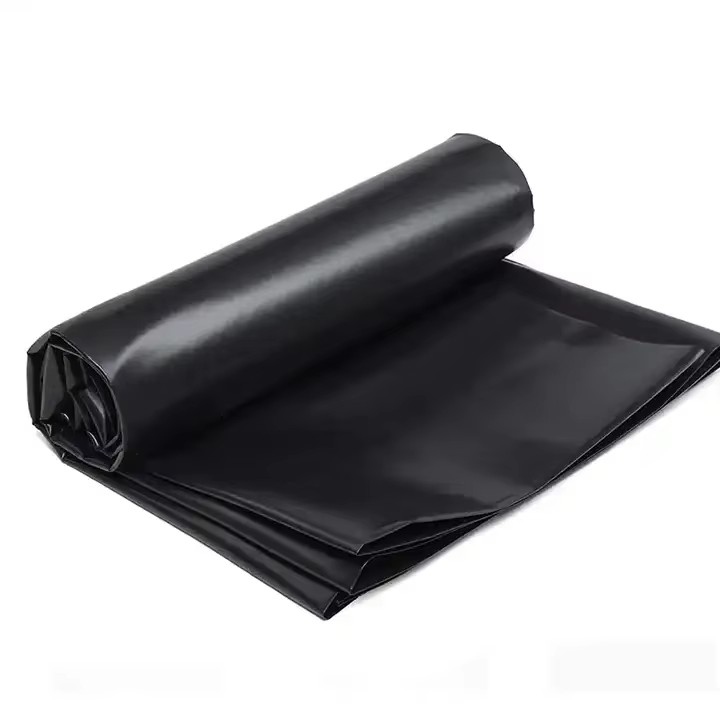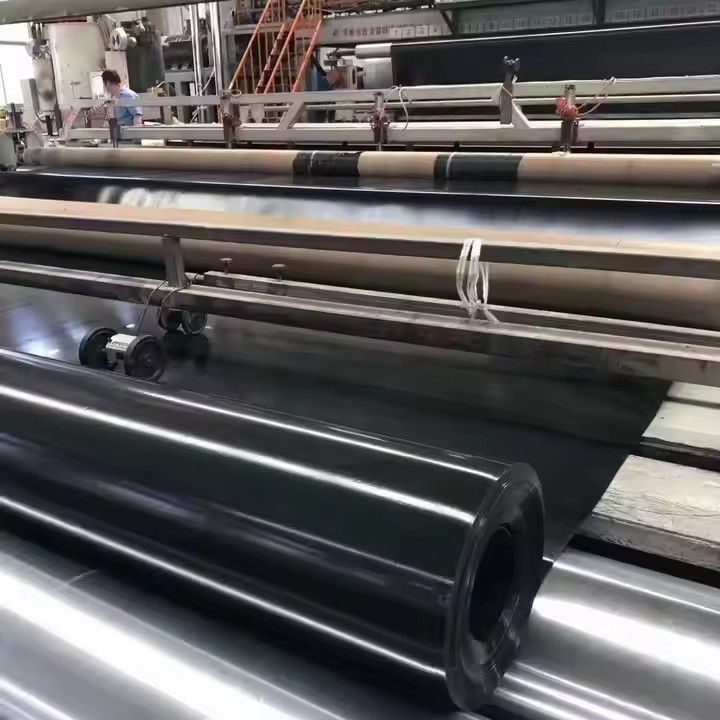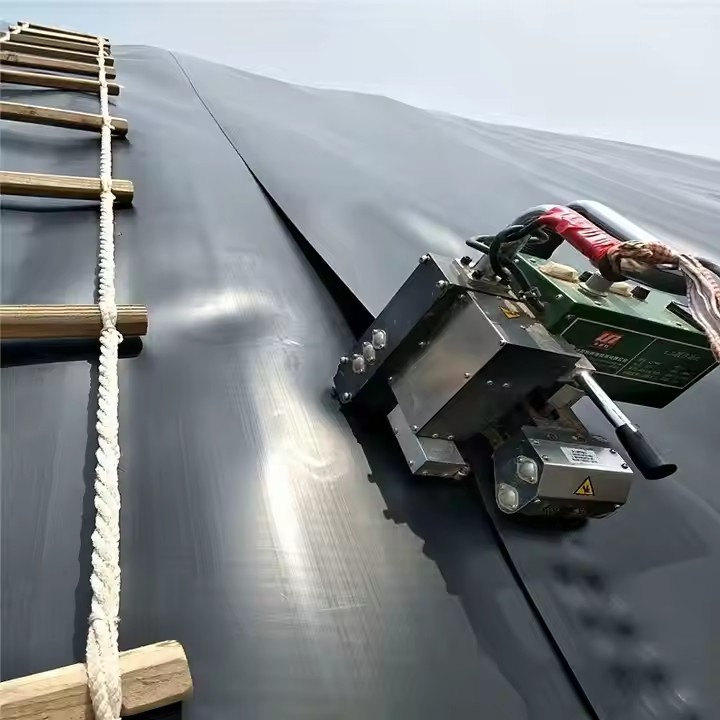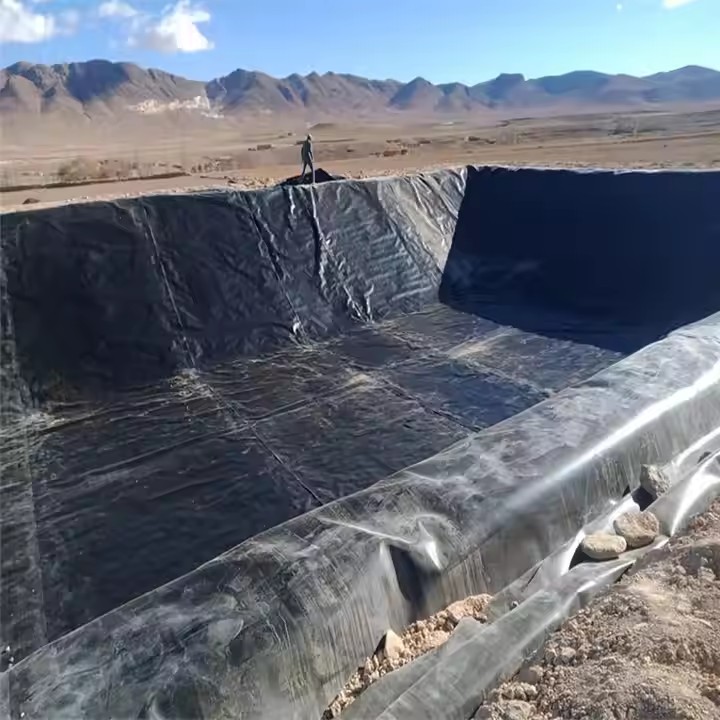Comparing Applicable Scenarios: Composite vs. Single-Ply Geomembrane Liners
In construction and environmental work, geomembrane liners are like those invisible guards you never notice—until you need them. They keep liquids, gases, and all that harmful gunk from wandering where they shouldn’t. But here’s the thing: not all liners are created equal. Single-ply geomembrane liners, made from just one material like HDPE or PVC, are perfect for simple jobs. Then there are composite geomembrane liners, which mix a liner with stuff like geotextile fabric—these are the heavy hitters for when a project needs a little extra muscle. Let’s break down where each type works best, so you can pick the right geomembrane liner for whatever you’re tackling.
Single-Ply Geomembrane Liners: Simple Fixes for Specific Jobs
Single-ply geomembrane liners are kind of like those tools in your garage that do one thing really well. They’re not fancy, but when you need exactly what they offer—like keeping chemicals out, bending easy, or saving cash—they’re perfect.
HDPE Single-Ply Geomembrane Liners
High-density polyethylene (HDPE) liners are tough as nails, especially when it comes to handling harsh stuff. That’s why they’re a go-to for:
· Landfill bottoms: Landfills are full of heavy trash and that gross toxic liquid (leachate) from old batteries, cleaning sprays, and rotting food. HDPE’s tight structure keeps that gunk from seeping into the ground—plus, it can handle all that garbage weight without tearing. Pretty impressive, right?
· Industrial waste ponds: Factories often have these big ponds holding acids, oils, or other chemicals that eat through stuff. HDPE? It just laughs them off. No breaking down, no letting toxins leak into the soil or groundwater.
· Large water storage: When cities need to stockpile water, HDPE’s got their back. Hardly any water leaks through, and it holds up in the sun for years because they add those UV blockers. Handy, huh?
The catch? HDPE is stiff. Like, really stiff. Try laying it over bumpy ground or where the earth shifts, and it’ll fight you every step. Not great for uneven spots.
LDPE Single-Ply Geomembrane Liners
Low-density polyethylene (LDPE) is HDPE’s chill cousin—way more flexible, which makes it a breeze to work with in small or tricky areas. It’s a winner for:
· Small ponds and lakes: Whether it’s a farm pond for watering crops or a backyard pond with goldfish, LDPE bends to fit all those odd shapes. Wraps around rocks, tree roots, whatever—no cracking. Super convenient.
· Temporary holding spots: Construction sites always need somewhere to catch rainwater or that messy concrete runoff. LDPE lays down in a flash, holds small amounts of liquid, and you can just roll it up later to reuse. Perfect for short-term jobs.
· Greenhouse setups: Inside greenhouses, LDPE lines planter beds and irrigation ditches. It’s soft enough that growing plants won’t tear it up, and let’s be real—for big greenhouses, cheap matters. This stuff fits the bill.
But hey, LDPE isn’t as tough as HDPE. Sharp rocks or heavy tools? They’ll punch holes right through it. So you gotta make sure the ground’s smooth before laying it. And sunlight? Not its best friend. Leave it out too long without covering, and it’ll start falling apart after a few years.
PVC Single-Ply Geomembrane Liners
Polyvinyl chloride (PVC) liners are that reliable middle ground—flexible enough but still strong. They’re super useful in cold or busy spots. Here’s where they shine:
· Cold-weather projects: Up north, where it’s freezing half the year, PVC stays bendy. No cracking when you’re installing in winter—great for dams, canals, or holding areas in frozen ground. Trust me, that’s a big deal when it’s 20 below.
· Fish farms: Fish tanks and aquaculture ponds need liners that don’t let algae take over and can handle fish waste. PVC’s smooth surface keeps that slime from building up, and it takes the ammonia and gunk fish produce like a champ.
· Roof gardens: More buildings are putting gardens on their roofs these days, and PVC liners keep water from leaking into the building. They bend to fit the roof’s slope, handle people walking on them, and seal up tight with simple welding. Easy peasy.
The downside? Sunlight’s not great for it. Leave it in direct sun all day, and it gets brittle after a few years—so you’ll want to cover it. Also, there’s some chatter about chemicals in PVC (like plasticizers) leaking out. Not a huge issue, but something to think about near drinking water sources.
EPDM Single-Ply Geomembrane Liners
Ethylene propylene diene monomer (EPDM) is that rubbery geomembrane liner built for the worst conditions. Seriously, it’s like the superhero of liners. It’s perfect for:
· Shifting ground: Places like landfill sides, tunnel walls, or earthquake zones—you know, where the earth just won’t stay still. EPDM can stretch up to three times its size and snap back. No tearing, even when the ground moves around.
· Extreme climates: Whether it’s scorching deserts or freezing tundras, EPDM hangs in there. Sun, ozone, temps from -40°F to 250°F (-40°C to 120°C)—it laughs at all that. Lasts where other liners would crumble.
· Drinking water storage: EPDM’s non-toxic, so it’s safe for lining tanks or reservoirs that hold water for homes. Hardly any water seeps through, so your supply stays clean and full.
But yeah, superheroes come with a price tag. EPDM costs two to three times more than polyethylene. Installing it? More of a hassle too—you can’t weld rubber, so you need special glue or fasteners. Takes longer, costs more. And oils or solvents? Total kryptonite. Don’t use it at gas stations or refineries.
Composite Geomembrane Liners: Tough Enough for Big Jobs
Composite geomembrane liners are like team players—they mix a single-ply liner with other materials (usually geotextile, that strong fabric) to handle jobs that need more than one skill. They’re made for the complicated projects where a regular liner just isn’t enough.
Landfill Caps
When a landfill’s full, it needs a cap to keep rain out and trap methane gas. Composite liners? Perfect for this. Here’s why:
· They pair an HDPE liner (to block water) with a fuzzy geotextile layer. That geotextile? It’s like a shield, protecting the HDPE from rocks or sharp trash bits that would punch holes. Smart, right?
· The fabric also helps with water and gas. Lets methane (that greenhouse gas) escape safely, but stops rain from seeping in and making more toxic leachate. Win-win.
A single-ply liner would struggle here. No geotextile, and the HDPE gets holes. Gas gets trapped, causes bulges or leaks. Not good.
Mining Waste Ponds
Mines make all this leftover rock and sludge (called tailings) full of heavy metals like lead and arsenic. Nasty stuff. Composite liners keep it from getting out:
· They use a tough liner (like PVC or HDPE) with a strong woven geotextile behind it. That fabric takes the hit from sharp rocks in the tailings, so the liner doesn’t tear.
· Mines are busy—trucks, heavy equipment moving around. The composite’s extra strength handles bumps and shifts in the waste pile without breaking.
Single-ply liners? They’d wear out fast. Mining waste is too sharp, too heavy—they can’t handle it alone.
Coastal Protection
Beaches and shorelines need liners that can fight waves, saltwater, and all that constant movement. Composite liners? They’re up for the fight:
· They often use EPDM (which laughs at saltwater) with a geotextile that holds it in the sand. The fabric stops waves from yanking the liner loose, while the EPDM bends with the tides and resists sun damage.
· Storms, strong currents—they carry rocks and driftwood that would tear a regular liner. The composite’s double layer (liner + fabric) takes those hits, keeps water from eroding the shore.
Road and Railway Beds
Under highways and train tracks, liners need to stop water from ruining the ground. Composites work here—here’s why:
· They mix HDPE (to block water) with a sturdy geotextile that strengthens the soil. The fabric spreads out the weight of cars or trains, so the ground doesn’t sink. HDPE keeps rain from soaking in and freezing—you know, that stuff that cracks roads.
· Building roads means dealing with gravel, rocks, uneven dirt. The geotextile cushions the HDPE, so sharp stones don’t punch holes. Single-ply liners? They’d struggle with that.
How to Choose: Key Things to Consider
Picking between composite and single-ply geomembrane liners? It all depends on what your project needs. Here’s a quick cheat sheet:
· Cost: Single-ply is cheaper—LDPE can be as low as \(0.50 a square foot. Composites start around \)1.80. Tight budget, simple job? Go single-ply.
· Ease of installation: Single-ply lays down fast with basic tools. Composites? More work. Gotta line up layers, make sure they stick. Takes time.
· Toughness: Sharp objects, heavy weights, shifting ground? Composites are tougher. Calm, flat areas? Single-ply’s fine.
· Environment: Cold? PVC. Extreme heat or cold? EPDM. Chemicals? HDPE. Saltwater? Composite with EPDM.
Conclusion
Whether you need a simple single-ply geomembrane liner for a small pond or a tough composite for a landfill, it’s all about matching the liner to the job. Single-ply’s best for straightforward, low-stress situations where you just need one thing—like flexibility or chemical resistance. Composites? They’re for when things get complicated. When you need a liner that blocks leaks, stands up to sharp stuff, and lets water drain—all at once.
Know where each type works, and your geomembrane liner will do its job: keep the environment safe, protect buildings and structures, last for years. After all, the right liner isn’t just a barrier—it’s something that lets you sleep easy at night.









